The Catholic University’s Innovation Center
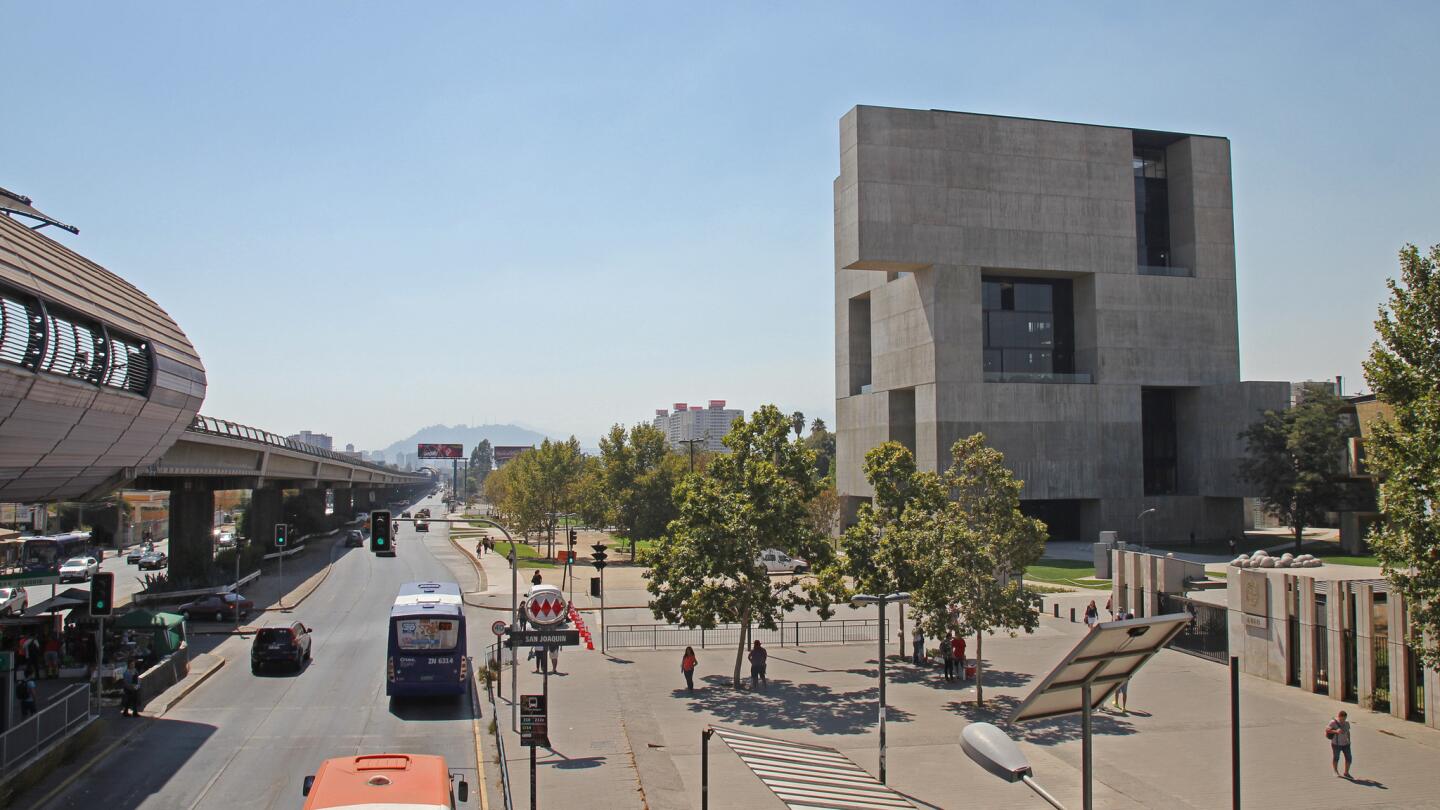
The Catholic University’s Innovation Center is located at the university’s San Joaquin campus, south of downtown Santiago. The building appears to reach toward the elevated metro rail at left - an iconic blocky landmark that can be seen for miles around. (Carolina A. Miranda / Los Angeles Times)
A striking new building at Santiago’s Catholic University by Alejandro Aravena and Elemental brings together the sculptural forms of brutalism around a surprisingly airy interior.
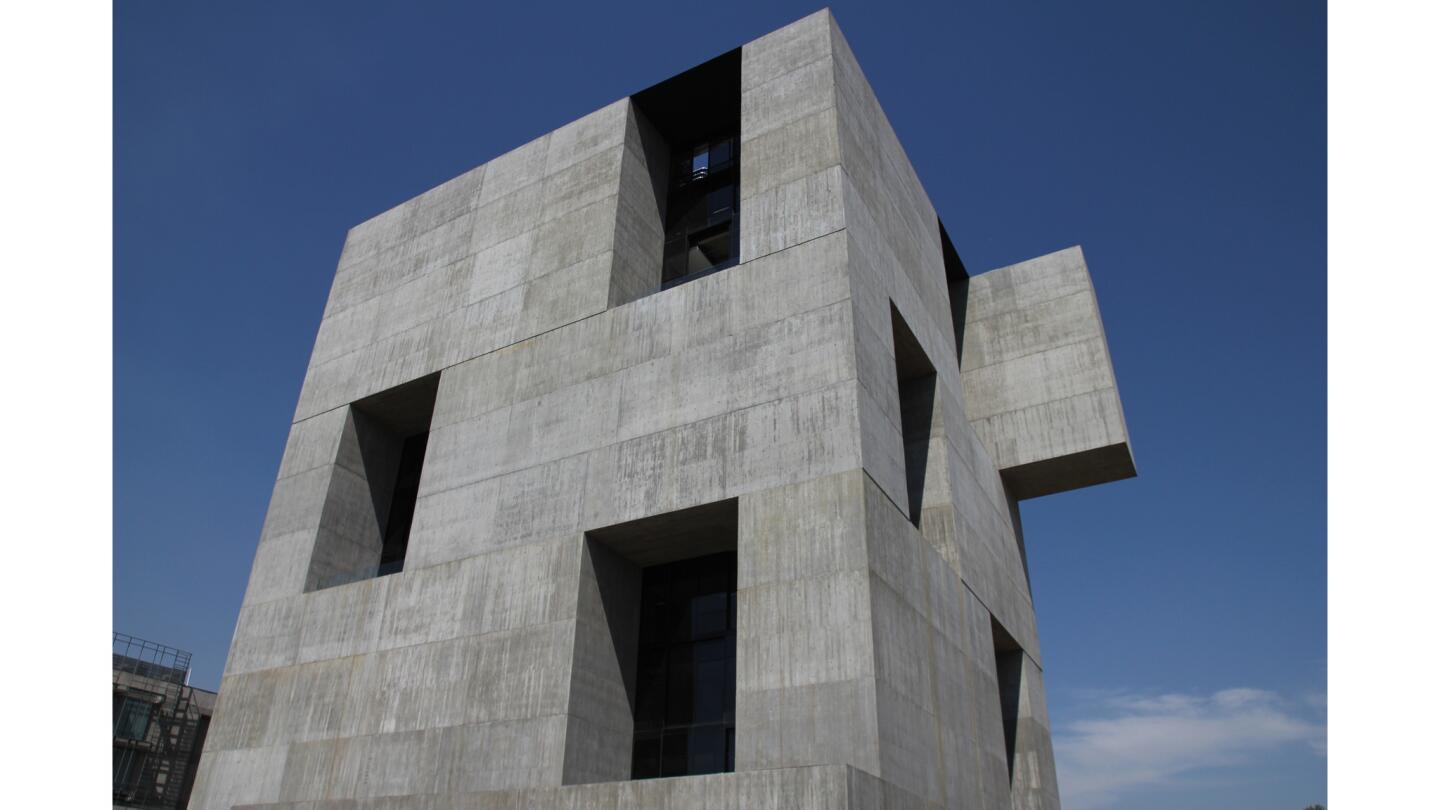
Capturing the rear of the building (which is just as dramatic as the front). The oversized window gaps create a series of outdoor terrace spaces where the building’s occupants can gather. (Carolina A. Miranda / Los Angeles Times)
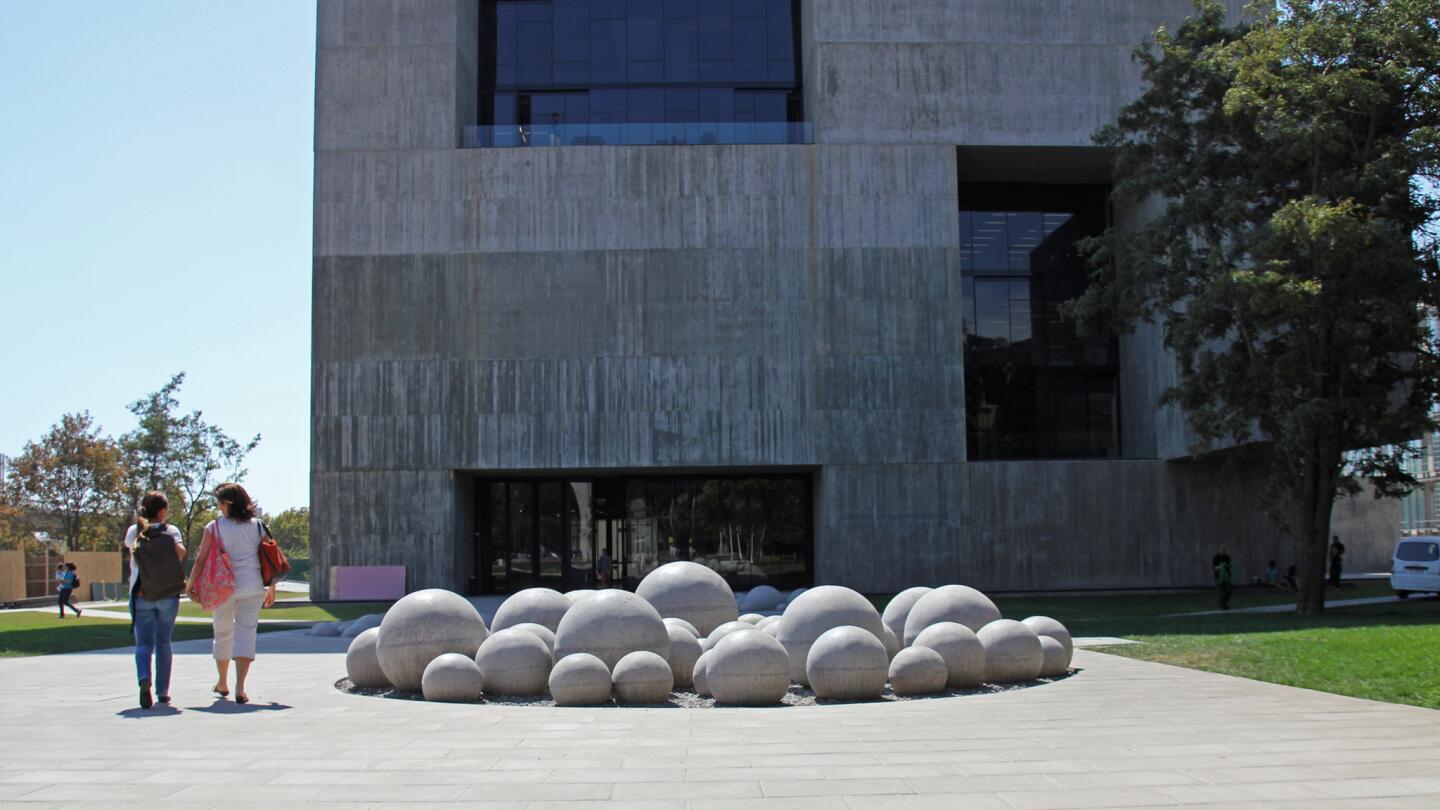
The Innovation Center has a couple of access points. The principal one is reached off the main gate into the university, just off the metro, past a series of orb-shaped sculptures. Altogether, it exerts a strong gravitational pull. (Carolina A. Miranda / Los Angeles Times)
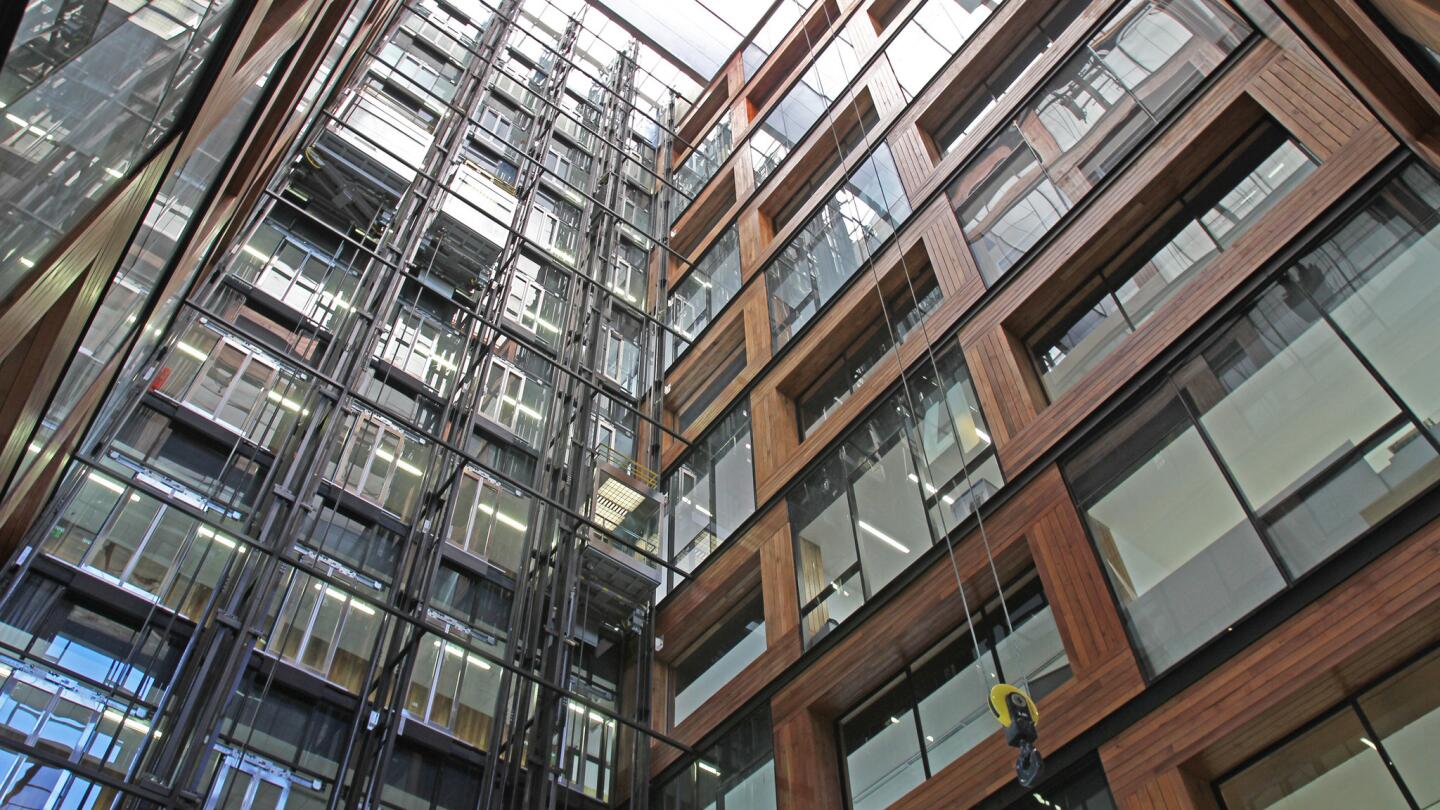
The building has a dense concrete skin, but it’s interior is a sunny open space featuring a boxy geometric pattern made from steel and oak. The steel frame to the left carries the elevators. (Carolina A. Miranda / Los Angeles Times)
Advertisement
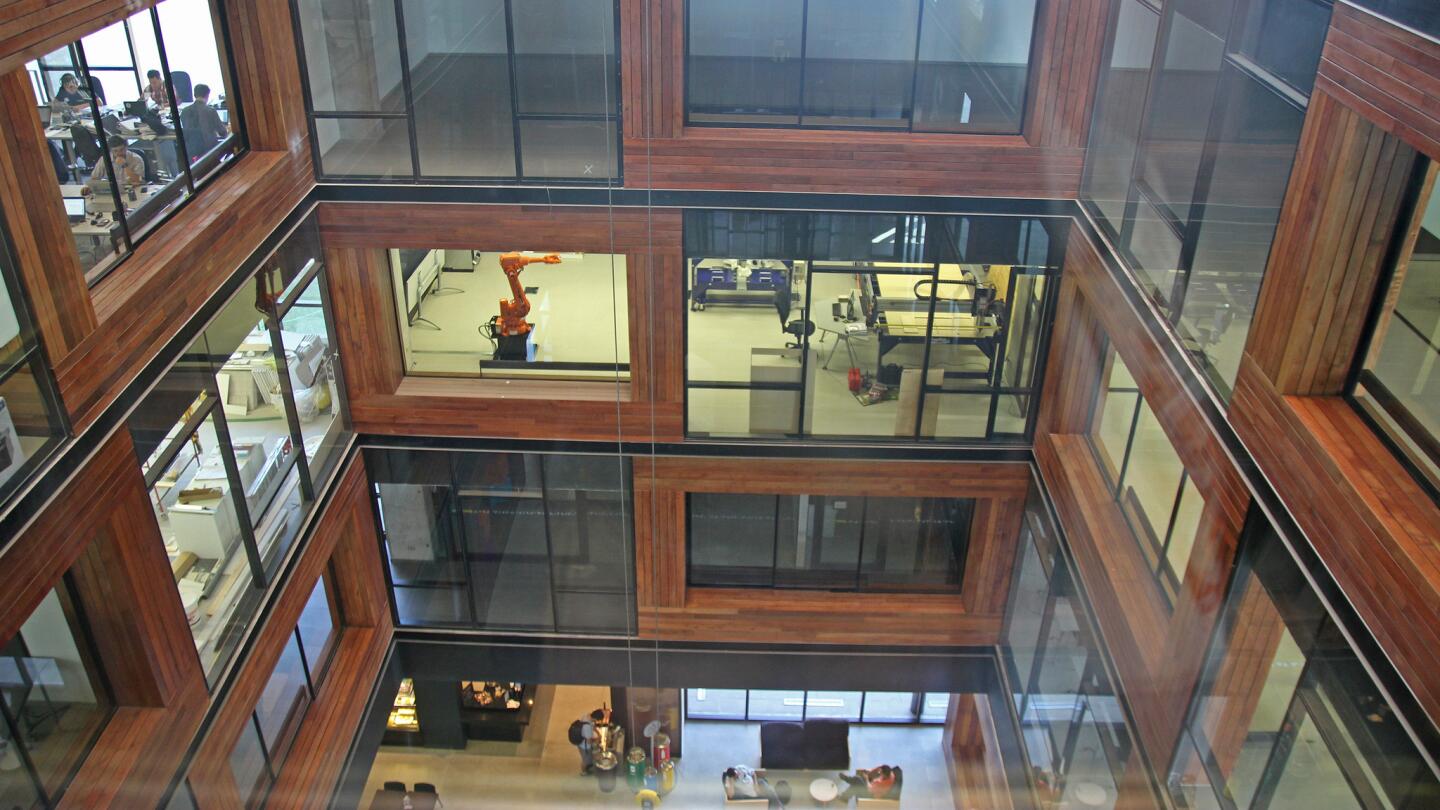
The architects wanted to create a building that had a transparent interior - where the occupants of one floor might be able to see what another was working on. This is the view from the glass-walled elevators, which provide a staggering trip through the structure. (Carolina A. Miranda / Los Angeles Times)
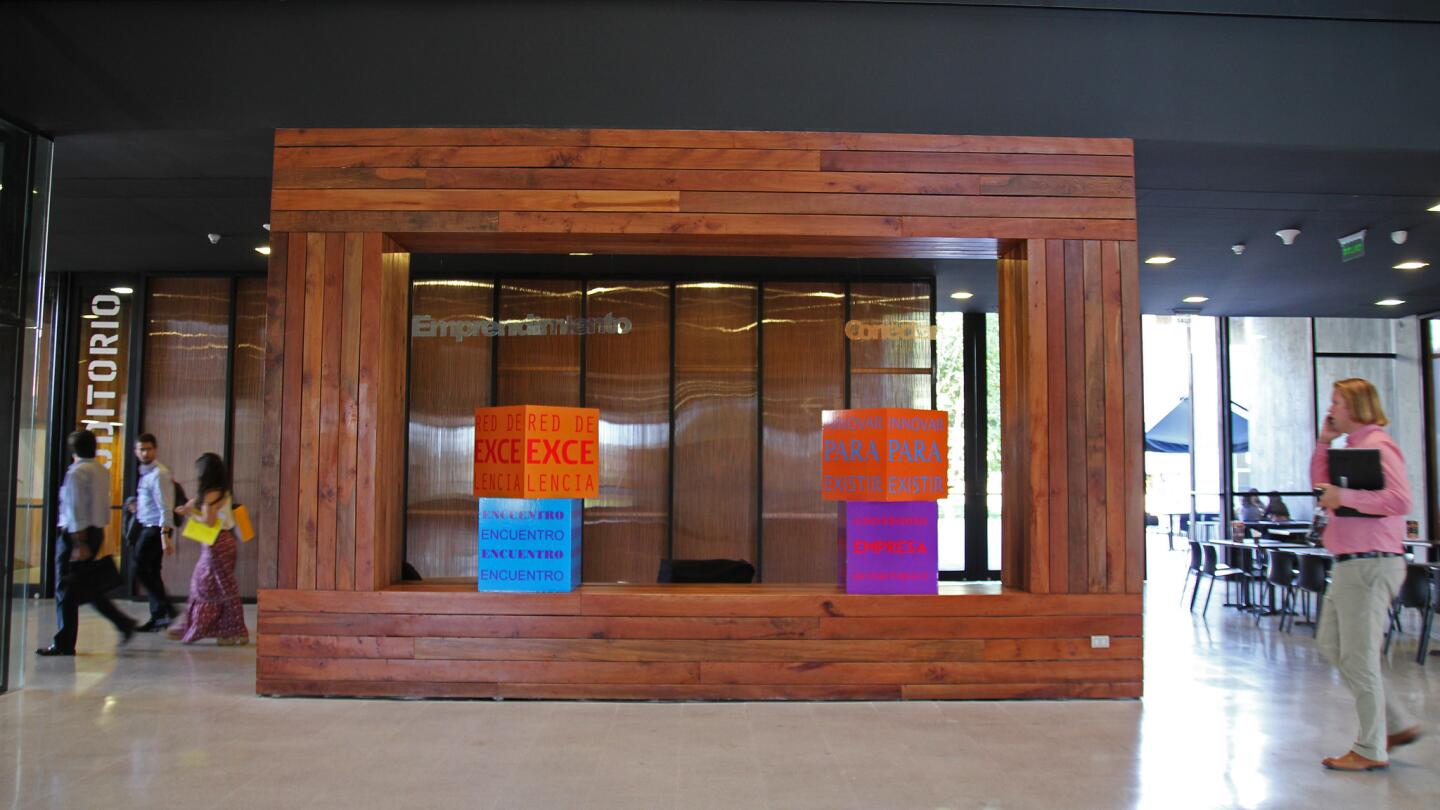
The rectangular oak beams add a bit of warmth to the steel and concrete interiors. They also frame the views of each floor. This one, at ground level, provides a sense of scale. (Carolina A. Miranda / Los Angeles Times)
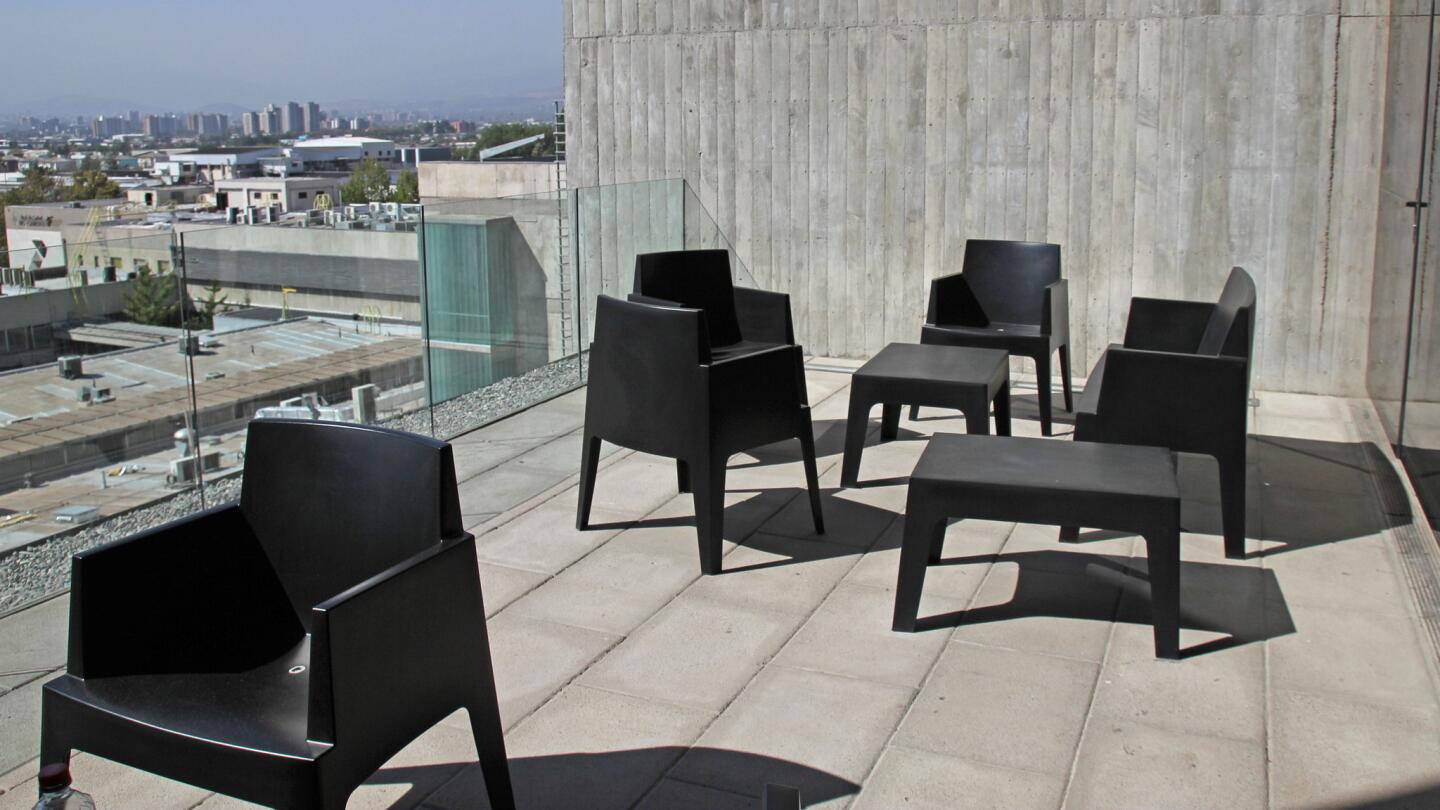
The building’s elevated terraces serve as impromptu gathering spaces where people can meet, eat a sandwich or have a cigarette - all with views of the city. This was a key part of the design: to create social spaces where surprise interactions could occur. (Carolina A. Miranda / Los Angeles Times)
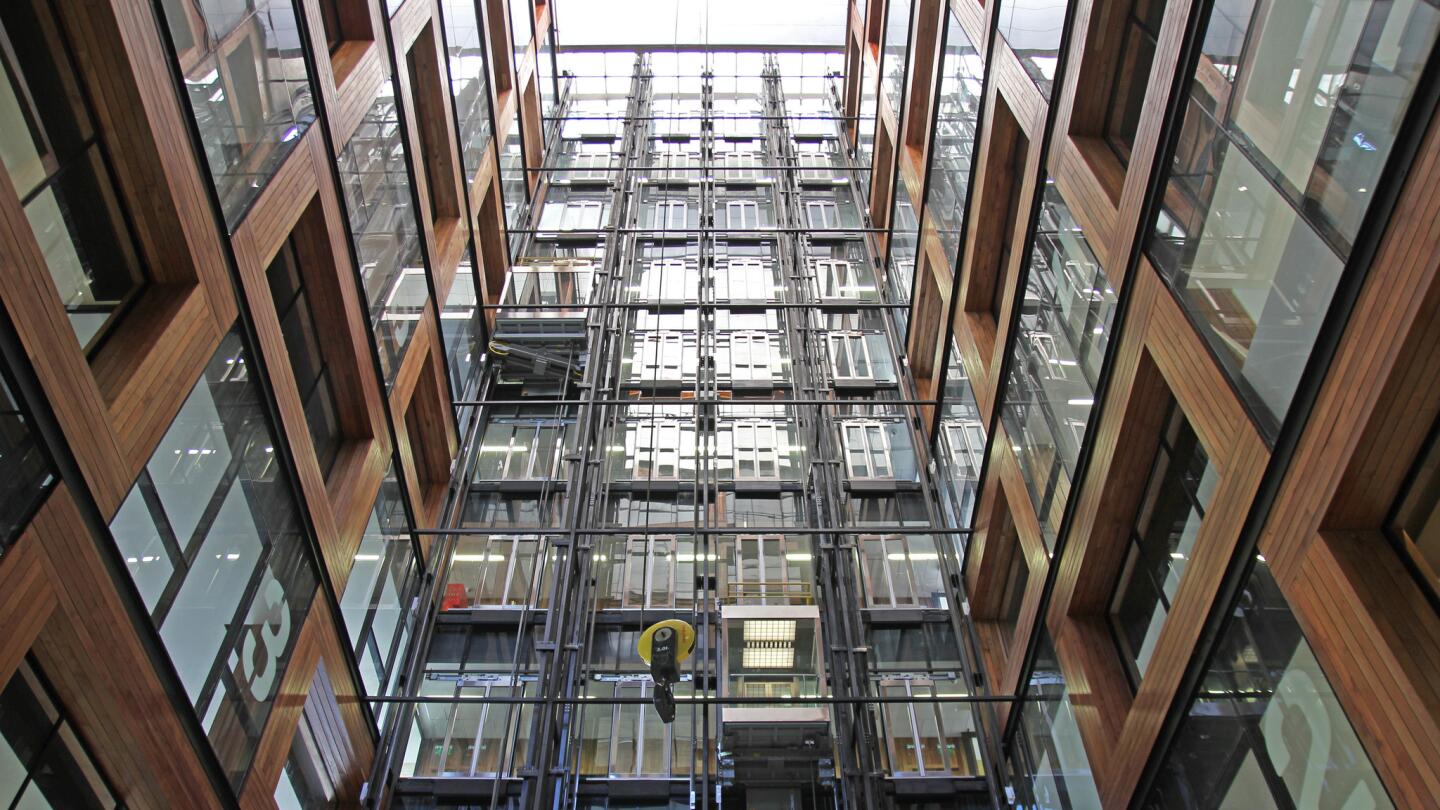
The interior is truly breathtaking: a combination of power and function and geometry. The first thing most visitors to the building do when they arrive inside is look up and just stare. (Carolina A. Miranda / Los Angeles Times)
Advertisement
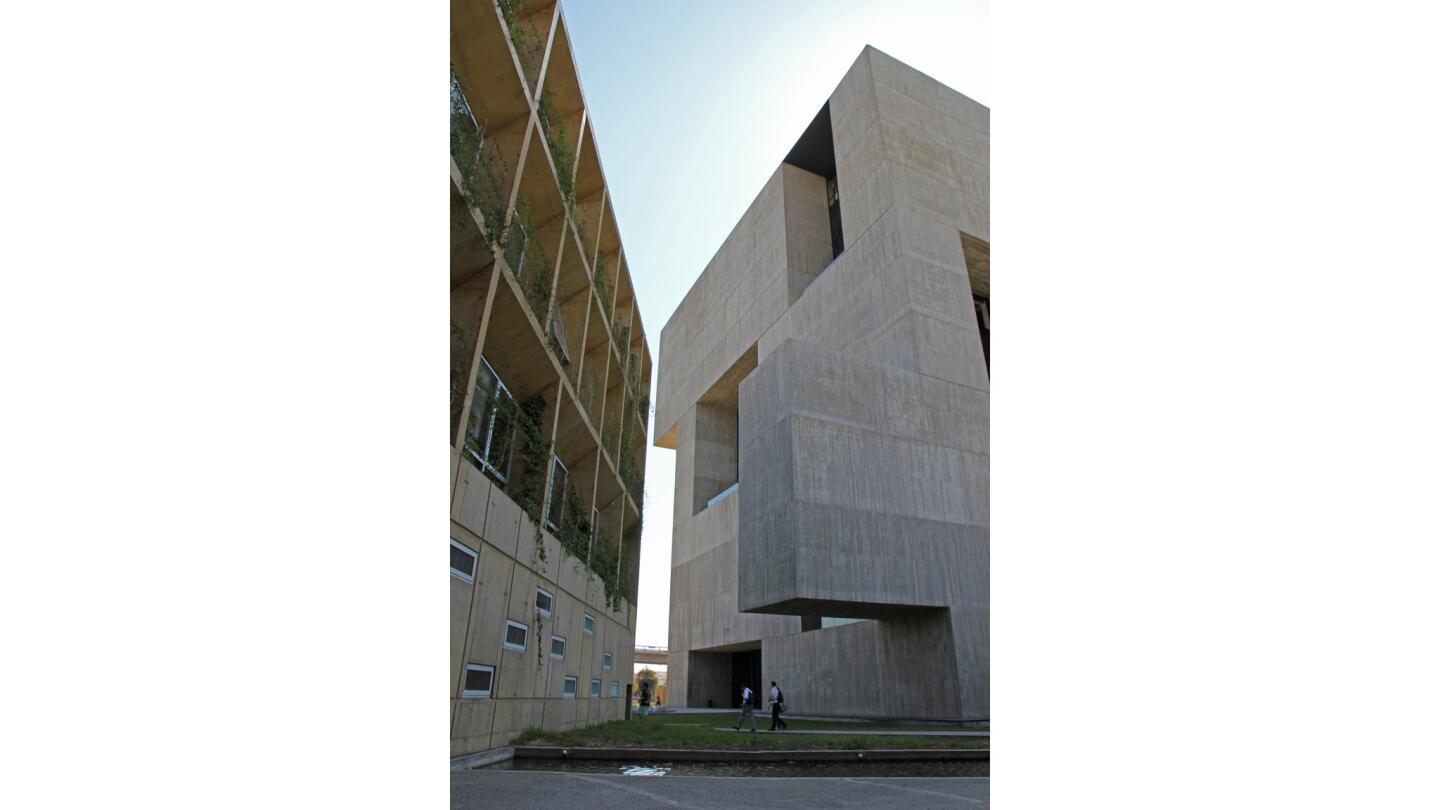
Seen from the east, Aravena’s building appears to extend a hand to the Catholic University’s Education School, which was designed by another architect, but is also made with Béton brut concrete. (Carolina A. Miranda / Los Angeles Times)
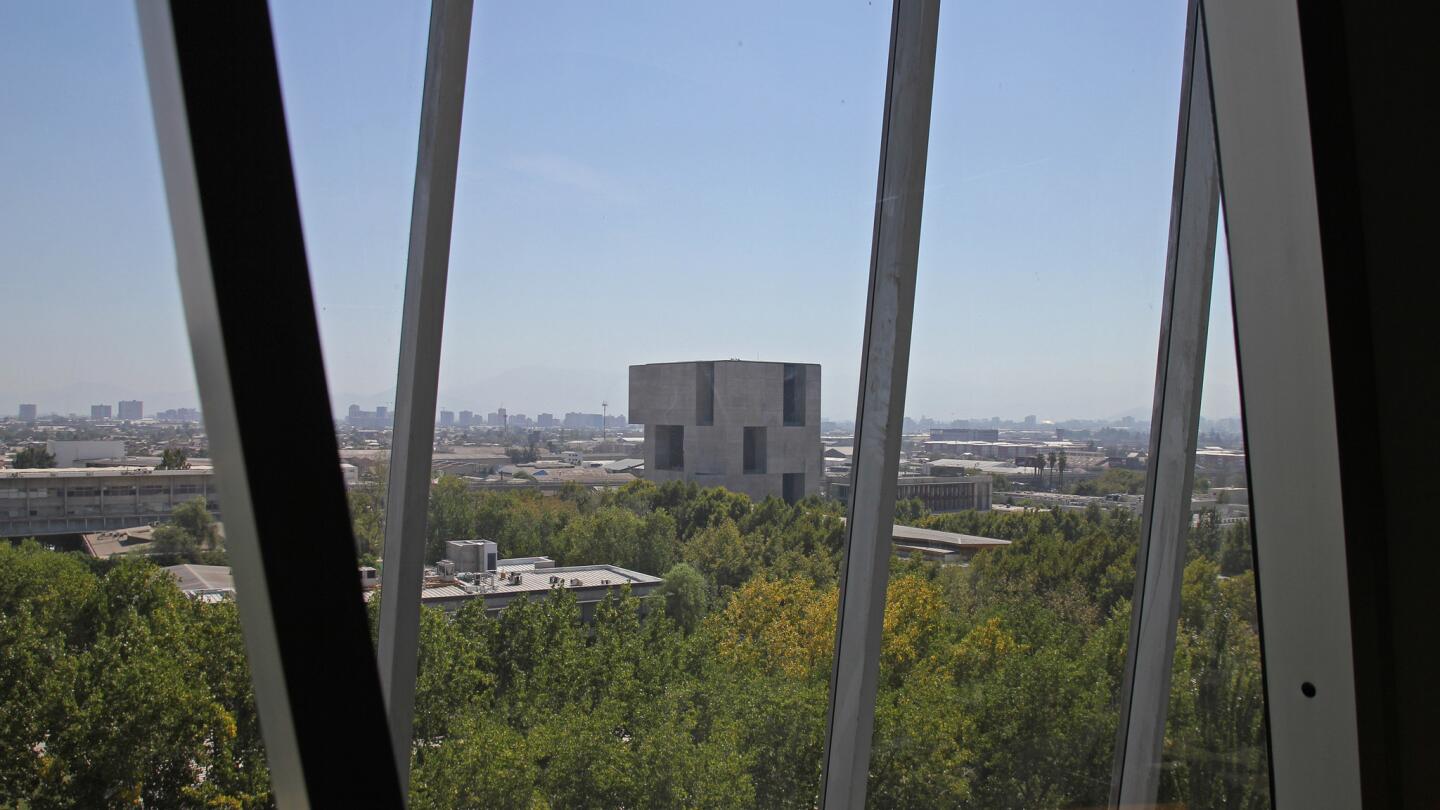
The building as seen from the eastern side of campus -- from another Aravena-designed building, the Siamese Towers. (Carolina A. Miranda / Los Angeles Times)



